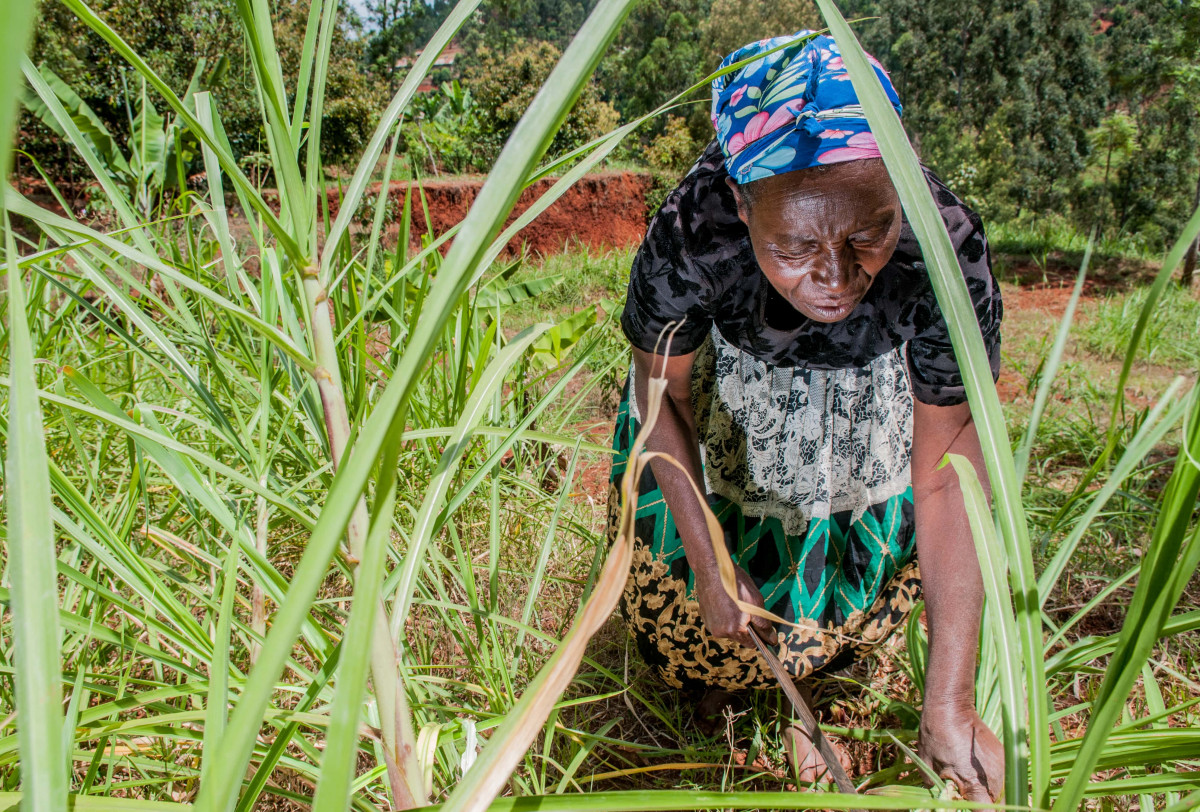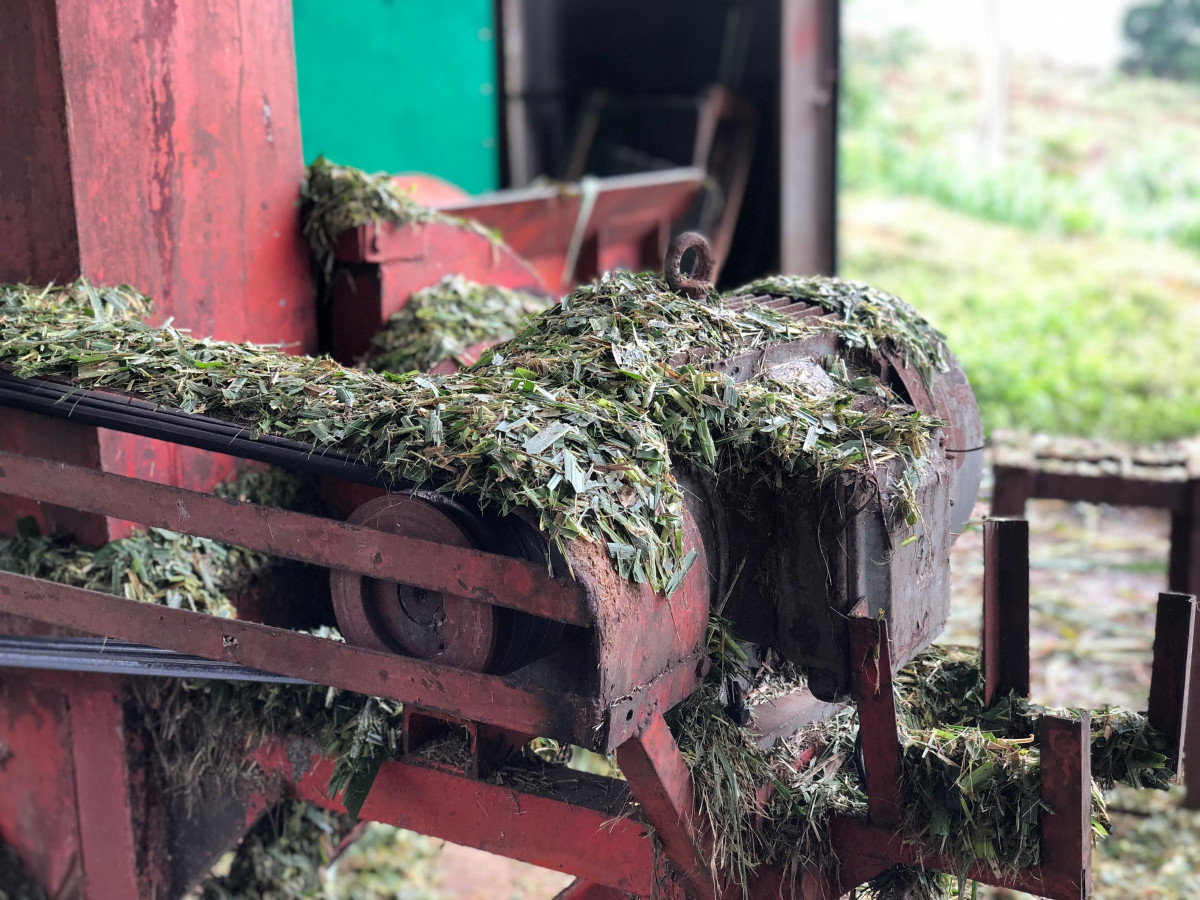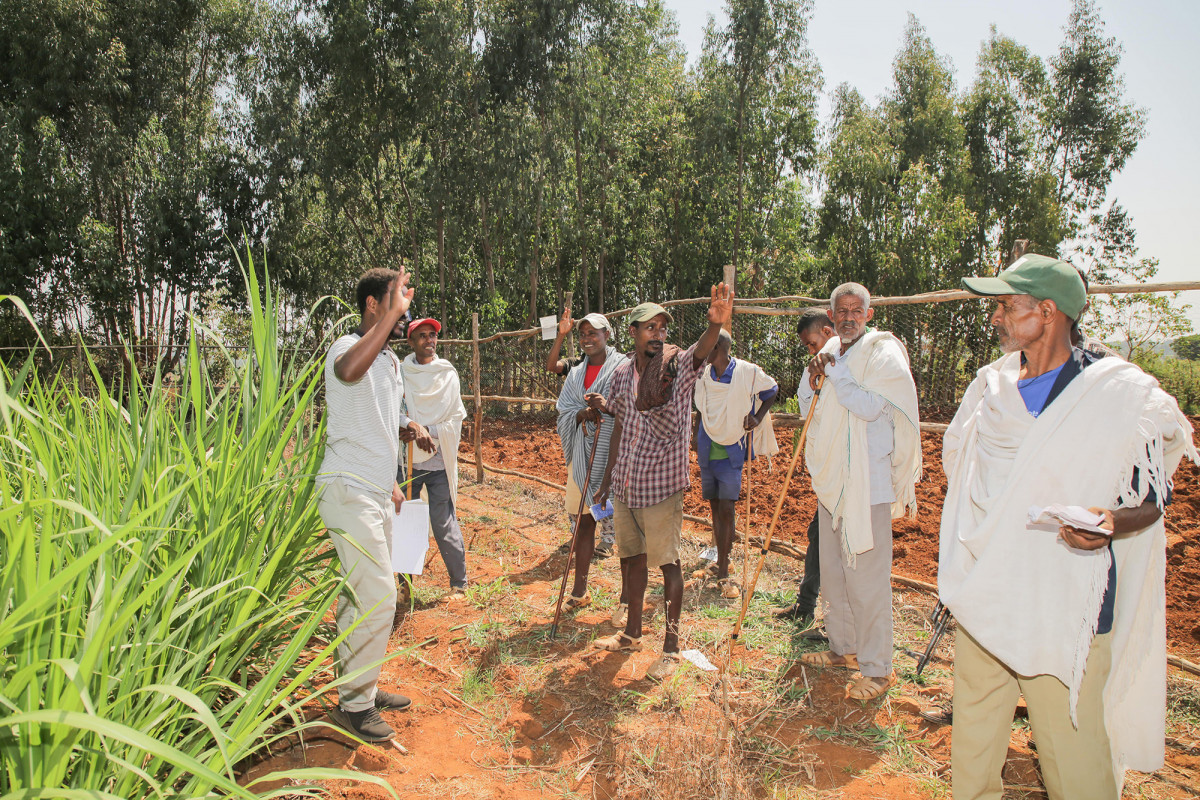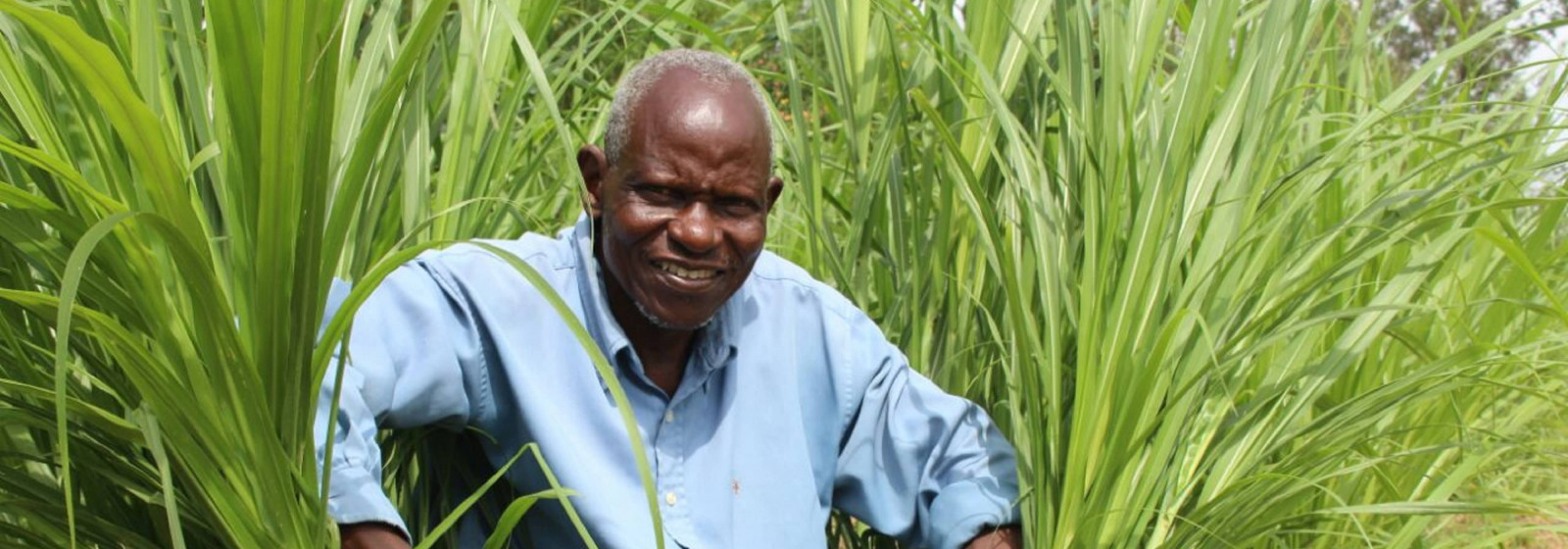Named after the largest animal walking the earth, elephant grass once grew so prolifically across Africa’s riverbeds and rainforest margins that African elephants developed a special preference for it. But in recent decades, the grass has grown in popularity with another large land animal – cattle.
‘We use [elephant] grass because it’s nutritious for the cows. If I didn’t have [elephant] grass on the farm probably my cows would starve,’ said Patrick Mogoko, a farmer from Kiambu in Kenya.
Elephant grass (also commonly known as Napier grass) has been so popular with livestock farmers in East Africa that it has become the most widely grown forage in the region. It’s also a much sought-after forage across Southeast Asia, the Caribbean, Central and South America.
‘Elephant grass is able to grow with very little water and nutrients and it is more palatable and higher yielding than most other grasses that grow in the tropics. Once livestock farmers realised its potential, it rapidly took off,’ said Ben Lukuyu, animal nutritionist and Uganda Country Representative for the International Livestock Research Institute (ILRI).
But then in the 1990s, disaster struck. A fungal disease called head smut ravaged farmers’ fields, with broad-leafed abundant elephant grasses turned into thin, shriveled stems. Researchers knew they had to do something, so they set to work selecting elephant grass varieties that were resistant to the disease. They turned to ILRI’s forage genebank – essentially a big vault where thousands of the world’s forage plant cuttings and seeds are stored.
‘This is one of the reasons why genebanks are so important. Diseases can emerge and spread to wipe out a plant variety pretty rapidly, but if you have always got other varieties stored in the genebank then you can respond to these threats and ensure the crop survives,’ said Chris Jones, program leader in feed and forage development at the International Livestock Research Institute (ILRI).
Using the elephant grass cuttings stored in ILRI’s genebank, scientists from the Kenya Agricultural and Livestock Research Organisation (KALRO) and the UK’s Rothamsted Research spent the next few years selecting and testing new elephant grass varieties that wouldn’t succumb to head smut. The first varieties they came up with were named Kakamega I and Kakamega II.
Farmers were impressed, not only with the disease resistance of these new and improved varieties, but also with the wider benefits on their environment.

‘[Elephant grass] prevents soil erosion, it improves the soil quality and hence I get good yields from the crops I plant,’ said a farmer from the village of Enderberg in Babati district northern Tanzania.
Unfortunately, it also became clear over the coming years that these varieties of elephant grass weren’t as productive as other locally available varieties. Could scientists create another elephant grass variety that was both resistant to head smut disease and highly productive? The answer, it seemed, would lie nearly 10,000 kilometers away in the beef export capital of the world – Brazil.
Reducing the time to market
While East African researchers were busy fighting head smut disease, scientists at the Brazilian Agricultural Research Corporation (Embrapa) had developed a number of highly productive elephant grass varieties.
So in 2012, ILRI sent its disease resistant elephant grass varieties to Embrapa, hoping their plant breeders could use them to develop higher yielding, disease resistant varieties.
‘While some of the selections might not work for them in Brazil, they could be perfect for a farmer in east Africa. So our aim is to bring that material to Africa without compromising Embrapa’s breeding program,’ Jones said.
However, plant breeding isn’t a quick process, Jones said.
‘With lab testing and demonstration plots in multiple environments, it takes at least 10 years for a new cultivated variety (cultivar) to be ready for market release,’ he said.
Around the same time, new genetic technologies were starting to be exploited for plant breeding purposes so Jones and colleagues set out to see what these technologies could reveal about elephant grass. Over the next few years they developed a suite of genetic technologies for elephant grass and by 2020, working with researchers at China’s Lanzhou University, they had sequenced the elephant grass genome.
‘Once we knew the elephant grass genome, we could look at traits that are associated with different parts of the genome. Suddenly we could start to answer questions like - which genes control the grass’ ability to resist head smut disease? Which genes are responsible for the exceptional productivity of the plant?’ Jones said.
‘And that means that, as the breeders improve their varieties, instead of doing a three year field trial with a broad range of different varieties, they can instead focus on testing a few varieties that are genetically more predisposed to being superior. This significantly cuts down the time and resources previously needed to develop new varieties.’

Through the collaboration with Embrapa, five more promising highly productive and high quality varieties of elephant grass have been identified. These will be further explored by ILRI in the years to come.
In addition, four new elephant grass varieties have been released in Ethiopia over the past five years. Jones is now working with plant breeders and national systems across East Africa to use the genomic data they have available so they can support the development of more new and improved elephant grass varieties.
‘As far as I’m aware, there’s no active elephant grass breeding program outside of Brazil. So at the moment I’m trying to encourage young plant breeders, particularly from the national systems in east Africa, to engage with us,’ Jones said.
‘We’re keen to ensure that disease-resistant material is guaranteed to be in the background of the most productive or the highest quality material available for East Africa.’
Jones has also been applying his genomic expertise to other forages, such as the legume lablab, which produces beans that are used widely as a pulse or vegetable, as well as being a forage crop.
‘We’ve been collaborating with a plant breeder in Ethiopia who has released a number of improved lablab varieties. We have now generated a comprehensive genome of lablab, so we can try and understand the genetics underlying the existing varieties in order to develop something better for future releases of new lablab varieties,’ he said.
‘The team has also been developing molecular capbilities for other popular forages such as Sesbania, Neonotonia, Rhodes grass, Buffel grass and Brachiaria.
‘Through these initiatives we’re also providing evidence of what’s possible with other forage species which are often listed as "orphan crops" in the genomics world, so hopefully we will see more forages genotyped and sequenced in the future,’ Jones said.
Understanding farmer limitations
Once the improved varieties are ready for commercial release, the next challenge is getting them to smallholder farmers. The first step, is understanding what the farmer’s limitations are.
‘A classic development approach is that you see that a farmer doesn’t have any forages so you go and give them a bunch of forages and say "plant these and then you can feed your animals." But if their major limitation is actually labour, or water, or poor soils, then it doesn’t matter how many forages you give them, they will die or they won’t be harvested, and therefore the farmers won’t get what they need,’ said Alan Duncan, Principal Scientist in Animal Nutrition at ILRI.
To help understand farmers needs and the forage varieties that would best meet these needs, the ILRI team developed a feed assessment tool called FEAST.
‘So when we wanted to understand the contribution of forages to the overall diet of livestock in five districts in Uganda, the FEAST tool guided us through a series of questions to ask the farmers. It then rapidly analysed the data and showed us farmers with bigger pieces of land and extensive systems are not planting many forages. It gave us a good understanding of what should be our entry point and what sort of forages we should be looking to introduce into the extensive systems,’ Lukuyu said.
ILRI scientists have also been testing the best uptake methods with farmer groups in Tanzania.
‘We planted the different elephant grass varieties on plots managed by the farmers. They they came up with a process of distributing the planting materials amongst themselves. Some farmers were actually sending the cuttings to other farmers who wanted to plant them. This seems to be the best way of disseminating the material as quickly as possible,’ Lukuyu said.

‘The problem with this method is that planting a large area is constrained by manpower. If we could plant with seeds, then the dissemination would be much higher. But farmers don’t seem to get much yield when harvesting elephant grass seeds, and therefore they don’t really know how to handle it.’
Scientists are now looking at developing a seed-borne variety of elephant grass.
‘Embrapa are also really interested in a seed borne variety so they can automate the planting of the elephant grass varieties that they have across Brazil. If we can provide them the data that supports the development of seed borne varieties, we can also use that for the selection of seed borne varieties in east Africa or south Asia,’ Jones said.
One of the other challenges with seed systems is that often the seeds that are available to smallholder farmers are of varying quality. To this end, Jones and Duncan have been supporting the Ethiopian government to develop a quality declared seed system for forages.
‘While it’s not certification, it does provides some guarantee of forage seed quality and authenticity. And hopefully it’s a bridge to that next level to try to guarantee as many seed producers as possible produce high quality seed. So, hopefully we’re on track to a decent seed system in Ethiopia,’ Duncan said.
One of the biggest learnings from the research has been the importance of working with the priorities of plant breeders.
‘The challenge we had right at the beginning is that there wasn’t that much in the way of forage plant breeding, let alone elephant grass breeding. So we have had to work really hard to encourage plant breeders to invest in improving elephant grass. Now that there’s more activity in plant breeding, we can work with the priorities of the plant breeders rather than try to inform them,’ Jones said.
‘With genomic technologies getting better and better, I’m confident we’ll see forage plant breeding become a significantly faster and more accurate process, meaning improved forages get to market quicker for the benefit of farmers around the world.’
--
Learn more:
- Blog: A new study gives insights on Napier (elephant) grass, a fast-growing tropical grass [ILRI, Oct 2020]
- Blog: New insights into the diversity of Napier grass: More productivity in fully irrigated systems [ILRI, May 2019]
- Journal article: Opportunities for Napier grass (Pennisetum purpureum) improvement using molecular genetics [June 2017]
